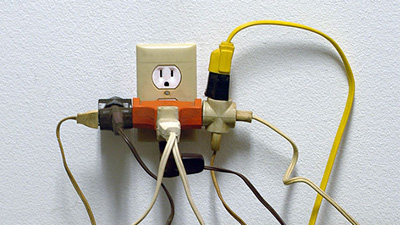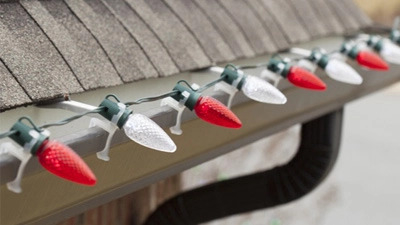A damaged extension cord can turn sparkling Christmas lights into a raging housefire. Because of that, it’s crucial to be careful how you use your extension cords to power those lights. In this article, we’ll go over why the right extension cords are so important and how to use them. That way you can light up your home for the holidays safely.
Power Requirements: A typical household circuit can draw a lot of power for outlets, lights, or other appliances. That means your Christmas lights share that circuit with anything else there. If that circuit already has several things on it, you might start tripping your breakers. It also may prevent other things plugged into that circuit from getting enough power.
Heat: You should be able to find the extension cord's max amperage on the packaging. This is the highest amount of power that the cord can handle. Running something that needs more on that cord can cause it to overheat. If that happens, the cord could melt its insulation and start a fire. If you plan on running more than one string of lights, you'll need to know the power they all pull so you don't overload the cord.

How To Choose Your Cord: For outdoor decorations, you’ll want to use a good indoor/outdoor extension cord. They’re insulated against the weather and easy to see. Indoor decorations can use smaller indoor cords as long as you know the power limits. Beyond that, it’s going to depend on how much you’re powering and how far the cord needs to travel. In general, a 14-gauge cord is good for 25 feet of lights, a 12-gauge for 50 feet, and a 10-gauge for 100 feet. LED lights are going to use less power than incandescent, so they can use a smaller cord.
Where To Plug Them In: GFCI protection is especially important when considering exterior Christmas lights. Because the lights and cords stay outside, they have a higher chance of weather damage. GFCI outlets shut the circuit down if they sense the power isn’t going where it should. That can prevent fires and helps to keep your family safe.
